When the creation of Embedded Wizard started in 2003, the main idea was to deliver the comfort – known from PC development tools – to embedded systems. With the help of customer’s feedback, it has been improved ever since, to support the daily GUI development workflow in the best possible way.
See 10 features that will simplify your GUI project:
1. Integrated Development Environment (IDE) 
Embedded Wizard’s comfortable IDE provides drag-and-drop, copy-and-paste and undo-redo functionality. Sophisticated utilities, like the object browser and the 'assistants', enable an easy overview over the application structure and a quick access to its members. Developers will find everything they need in one familiar place.
2. Visual Programming Approach 
Create GUI applications by clicking, dragging and connecting visual to logical components with the mouse. Benefit from instant WYSIWYG (What you see is what you get) and evaluate your GUI's appearance already at design time. Even target constraints, like limited color range, can be displayed in the IDE. And with Embedded Wizard’s instant prototyper you can step-by-step verify your GUI’s design, behaviour and usability.
3. Flexibility & Platform Independence 
Implement the desired behavior of a single GUI component or the entire application in Embedded Wizard's own, platform independent programming language, called 'Chora'. It is very similar to C, C++ and easy to learn. Besides standard statements like if, for, while, switch and local variables, Chora also provides useful operators and data-types especially for GUI applications. Chora also includes a garbage collector. Finally, Embedded Wizard analyses your project, intercepts possible errors and generates ANSI C or JavaScript code out of the project – optimized for each target (See 9. Targeting).
4. Object Oriented Programming 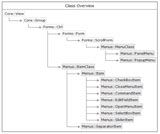
All components of a GUI application are realized as classes. Embedded Wizard's programming language 'Chora' supports derivation of classes, inheritance, overriding of inherited class members and polymorphism. This enables a highly iterative development process and results in well-structured, easy to maintain projects and reduced code size. Developers, who are familiar with OOP, can benefit from that knowledge, however, Embedded Wizard also supports a very simple programming model, which allows also developers without deep OOP knowledge, to create great results in a very fast time.
5. Ready-to-use components 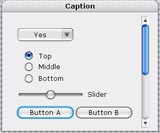
For an easy start-up, the 'Mosaic' class library was designed. It provides visual components for displaying text, images, color gradient, etc. as well as sophisticated widgets like buttons, select boxes, text fields, menus, panels and more. The class library also includes infrastructure for animation effects, event handling, focus handling, alignment, arrangement, touch screen and mouse support, and many more.
6. Localization 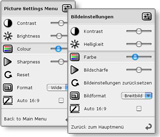
Develop multilingual applications, which can change text, graphics, fonts and even layout for each language. Thanks to UNICODE support, GUI applications can combine Greek, Cyrillic, Japanese, Far East and other notations within a single text. Whenever the current user language is switched, all dependencies are evaluated and displayed automatically.
7. Variants & Diversified GUIs 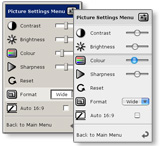
„Variants“ are a unique concept of Embedded Wizard, to facilitate the handling of different themes, layouts and screen resolutions within one GUI project. Variants of a GUI can be determined at compile time or switched at runtime. Moreover, the integrated JPEG file support, enables dynamic loading of JPEG images from hard disk or a content provider into the GUI for more flexibility and variety. During runtime, the intelligent resource management takes care, that only the needed resources (e.g. fonts, images) are loaded to save memory.
8. Debugging 
If your GUI application does not behave as desired, the powerful integrated debugger enables the step by step execution of 'Chora' statements, the setting of breakpoints and inspection of all variables and objects. Thus, you can be sure, that any GUI code generated by Embedded Wizard runs perfectly stable.
9. Targeting 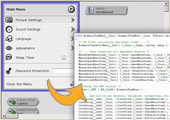
To bring your application to a particular target, Embedded Wizard analyses the project, intercepts possible errors and translates it into optimized, highly reliable and well-documented ANSI C code. The result can be compiled and linked with your main software. All target specific aspects, like the CPU architecture, the operating system and color format of the screen are handled by 'Platform Packages', which are tailored for a specific target platform. You can simply exchange the platform packages to generate code for various targets out of a single GUI project. With the JavaScript/WebGL Platform Package you can even generate your UI project as a single page application that runs in a WebGL capable browser.
10. Documentation 
To document the structure of your GUI application, Embedded Wizard can automatically create Microsoft HTML help files (chm), which are especially helpful when transferring your project to colleagues or third parties for maintenance and modifications. The documentation describes components, shows their inheritance and lists their members. It is enriched with descriptions that can be entered by developers optionally for every member in the project.